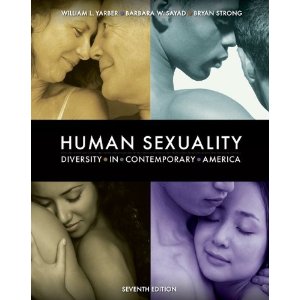About Me

- PeakeGeographer
- Leicester, United Kingdom
- Thank you for viewing this blog. My name is Joshua, a recent BSc Geography graduate from Coventry University, now starting on a Geography PGCE at the University of Leicester. My main area of expertise is within the domain of physical geography, with particular interests in Geomorphology, Quaternary Climates and Environments, and weather, climate and climate change. An area that I am not so familiar to is biogeography, but this is an additional area I am keen to develop and engage with.
Purpose of this Blog
The purpose of this blog is to aid mine as well as others (teachers, students and the public) understanding and knowledge in the subject field of Geography, with particular emphasis on the human domain; specifically cultural geography. This is an area I know limited about, in comparison to my specialism, and an area that I have come to find neglected in school education (*explained below). Firstly, this blog will introduce the concepts of GEOGRAPHY, to give details to those with limited understanding and experience; to outline the complexity of this ever changing subject and field. Secondly, and introduction to cultural geography and its branches will be outlined, with some sub-division examine in more detail than others. This is based on what I feel is lacked in education and the curriculum. Finally, a list of resources and references will be presented, which can be used for KS3 and used for all exam boards at GCSE level.
It needs to be noted that cultural geography is multidisciplinary and multifaceted within the geographical field, so overlaps into other geographical disciplines. I have tried to keep it purely separated for the sake of this blog, but it can be used for addition disciplines.
*This statement is based on my interpretation of the National Curriculum (NC) and GCSE specifications, where some of the branches within cultural geography e.g. sexuality and space, children's geography, music and behavioural geography are not fully acknowledged or identified within the NC for geography or in GCSE/A-Level specifications. In all honesty, cultural geography seems to be side-lined and/or integrated within economic, development and population geography. I feel for people (teachers, students and the public) to fully understand the scale and magnitude of geography, they need to be informed of the different branches and sub division within geography/cultural geography; highlighting individual branches of geography, whilst at the same time, explain and identifying how the different branches connection and are in relation to one another. For example, a number of schools in Leicestershire in year 9 look at music festivals and there locations, but they fail to highlight the key concepts of geography within that topic. For example, that topic would include cultural geography in the form of musical, behavioural, sexuality and tourism geography, but these are not identified and explained, leading to narrow-minded approaches within society. No wonder people assume geography is just colouring in, volcanoes and rocks.
The different branches and sub-branches of cultural geography will be explain in due course.
Wednesday, 18 September 2013
Summary of the 20 Blog Posts so far:
Sunday, 15 September 2013
Cultural Models:


Sunday, 1 September 2013
Religion and Geography:
- Spared spaces (religion and the environment)
- Community and Identity
- Kong, L (1990) ‘Geography and religion: trends and prospects’. Progress in Human Geography 14 (3): 355–371.
- Kong, L (2010) ‘Global shifts, theretical shifts: Changing geographies of religion’. Progress in Human Geography 34 (6): 755–776.
- Park, C (2004) ‘Religion and geography". In Hinnells, J. Routledge Companion to the Study of Religion. Routledge.
- Stump, R (2000) ‘Boundaries of Faith: Geographical Perspectives on Religious Fundamentalism. Rowman & Littlefield Publishers, Inc.
Wednesday, 28 August 2013
Culture: Religion
- Christianity (Christian/Catholic/protestant)
- Buddhism (Buddhist)
- Islam (Muslim)
- Judaism (Jew)
- Northern Ireland and the migration of people into the UK/USA
- Religion and environmental stewardship
- Sharia (Muslim) Law and policy in the Middle-East
- Religion and wider cultural change e.g. in regards to sexuality and gender (equality)
Wednesday, 21 August 2013
Celebrity Culture:
- The only way is Essex
- Made in Chelsea
- The Valleys
- Jersey Shore
- Educated people (many youths) about localities in the UK.
- Educated people about global cultures/landscapes in certain geographical areas. For example, Geordie Shore in Cancun and Australia.
- Highlighted alternative western cultures, away from the norm e.g. religion, sexuality, etc.
Tuesday, 20 August 2013
Part 7: Sexual Citizenship:
- USA
- Russia
- Saudi Arabia
- Nazi Germany
Part 6: Sex Tourism (Sexuality and Space).
- Reduced costs for services in the destination country
- Legal prostitution or indifferent law enforcement
- Access to child prostitution
- Acceptability
- Thailand
- Amsterdam
- Japan
- Costa Rica
- Eastern Europe
Short clip on sex trafficking...
- Barger, A, H (2002) ‘Sex Tourism in Latin America’. ReVista: Harvard Review of Latin America (Cambridge, Massachusetts, USA: Harvard University) (Winter). Retrieved 6 October 2011.
- WTO (1995) Statement On The Prevention Of Organized Sex Tourism". Adopted by the General Assembly of the World Tourism Organization at its eleventh session - Cairo (Egypt), 17–22 October 1995 (Resolution A/RES/338 (XI)). Cairo (Egypt): World Tourism Organization. 17–22 October 1995. Retrieved 20 December 2006
Thursday, 15 August 2013
Part 5: Geographies of LGBT (Lesbian, Gay, Bisexual and Transgender).
- San Francisco- Gay capital
- Thailand- Transgender
- City Soho locations- London, Hong Kong, etc.
- Help with public sector services e.g. transport and policing
- Promote tourism
- Evidence equality and diversity
- Promote global awareness
- BBC News :Thai school offers transsexual toilet http://news.bbc.co.uk/2/hi/asia-pacific/7529227.stm
- Bell, D. and Valentine G. (1995) ‘Mapping desire: geographies of sexualities’. London: Routledge.
- Collins A. (2006) ‘Cities of Pleasure: Sex and the Urban Socialscape.’ London, Routledge
- Rushbrook,D (2002) ‘Cities, Queer Space, and the Cosmopolitan Tourist.’ A Journal of Lesbian and Gay Studies 8 (1-2) 183-206
Wednesday, 14 August 2013
Part 4: Teaching Sexuality and the Education System
Part 3: What is Sexuality?
- Opposite sex (heterosexuality)
- Same sex (homosexuality)
- Both tendencies (bisexuality)
- Or
- Not being attracted to anyone in a sexual manner (asexuality)
Part 2: Origin and Critic of Sexuality and Space.
- Larry Knopp published 'Gay Geography' in the Geographical Magazine to some controversy in 1990.
- In 1992 Beatriz Colomina's Sexuality and Space was released in 1992.
- There have been several critiques of the field, as well as conflicts within the discipline. These are:
- Taking a western-centric position that has minimal relevance beyond the urbanized Western world.
- Discriminative against transgender people, the lower class, and people of colour.
- Gender differences are also erased in adopting a “queer” identity.
- The reinforcing of other forms of marginalization e.g. lesbians neglected as women.
- School minorities, are not included in the classroom, as they do not learn about themselves e.g. alternative relationships (Sujak, 2012) ------ This links to why this material is covered in this blog, to educate and expand emerging areas that are neglected in teaching, in life and in the national curriculum.
- Why should why children learn about that kind of ‘stuff’
- Why should children of religion be educated in a school that teaches about sins?
- http://www.fpa.org.uk/factsheets/sex-and-relationships-education
- http://www.whatsinyourcloset.co.uk/assets/cd2/4%20Coming%20Out%20-%20A%20Guide%20for%20Those%20who%20work%20with%20Young%20people/Talking%20about%20homosexuality%20in%20school.pdf
- Brown, G., Lim, J and Browne, K. (2007) ‘Introduction, or Why Have a Book on Geographies of Sexualities?’ Geographies of Sexualities. K. Browne, Lim, J. and Brown, G. London Ashgate.
- Sujak, M (2012) "Why Can't We Learn About This?" Sexual Minority Students Navigate the Official and Hidden Curricular Spaces of High School. Education and Urban Society.
Monday, 12 August 2013
Part 1: Sexuality and Space.
- The geographies of Lesbian, Gay, Bisexual and Transgender (LGBT) residence
- Sites of queer resistance
- Global sexualities
- Sex tourism
- The use of sexualised locations in the arts
- Sexual citizenship
- There’s lots more, but some are too extreme for child/youth education, but this is debatable (Bell and Valentine, 1995).
- Bell, D. and G. Valentine (1995) ‘Mapping Desire: geographies of sexualities.’ London, Routledge.
- BInnie, J (2004) ‘The Globalization of Sexuality.’ London, Sage.
- Binnie, J. and Valentine, G. (1999) ‘Geographies of sexuality - a review of progress.’ Progress in Human Geography 23(2): 175-187.
- Brown, G., Lim, J and Browne, K. (2007) ‘Introduction, or Why Have a Book on Geographies of Sexualities? Geographies of Sexualities. K. Browne, Lim, J. and Brown, G. London Ashgate.
Wednesday, 31 July 2013
Random post
Of course the video is fictional mostly, but still a good contemporary resource!
Part 4: The role of children in migration and of migration in children's lives (Children’s Geographies).
- The
Children's Overseas Reception Board was established to help families send
their children abroad to safety during the war.
- After the
war, over 3,000 children were sent to Australia under government-approved
schemes - many subsequently returned.
- The migrated
children were referred to as 'the seeds of empire'.
- 'If you want
to go, put your hand up' was the instruction used to select children for
emigration from institutions such as the Dr Barnardo's Homes
Australia Case study:
- Anon (2009) ‘Independent child migration’. CMRN main themes. Child migration Research Network.
- Read, P (1981) ‘The Stolen Generations: The Removal of Aboriginal children in New South Wales 1883 to 1969.’ Department of Aboriginal Affairs (New South Wales government).
- Why were
locations such as Wales chosen for evacuation?
- What
are the potential consequences of over child population in small villages?
- Critically discuss the impacts of social class in child migration.


















.jpg)

.jpg)




















